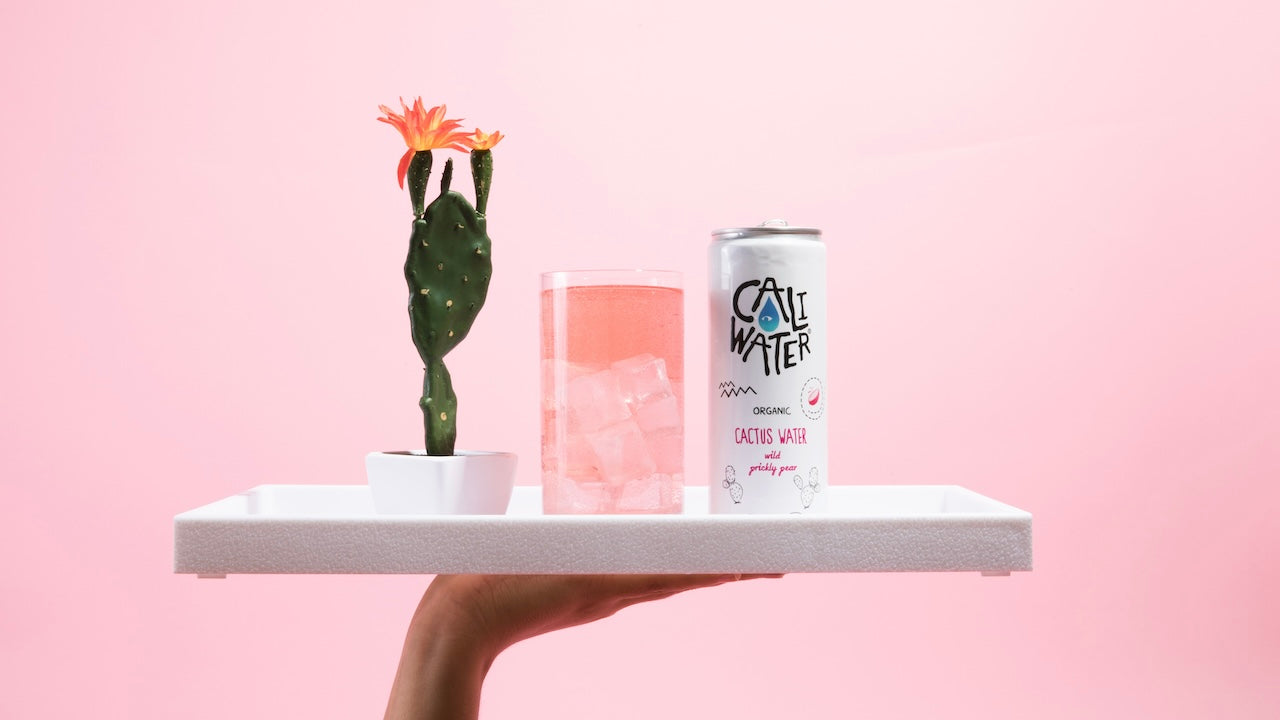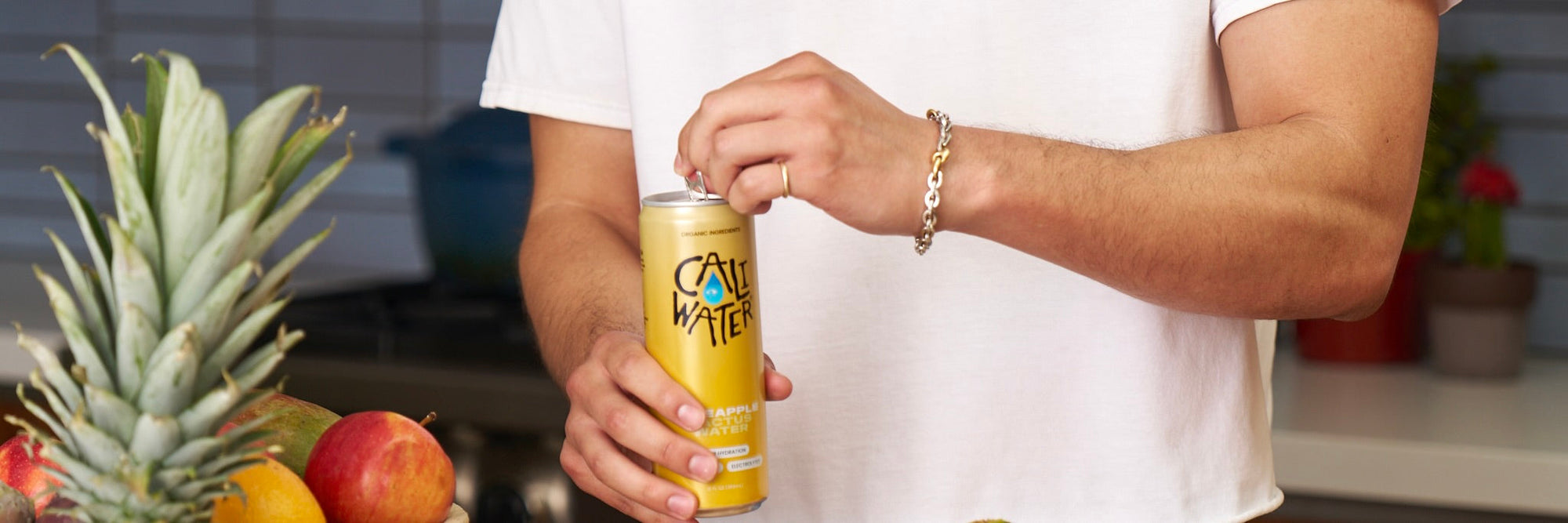

Prickly Pear Cactus Benefits: Does It Live Up to the Hype?
From its roots in Mexican herbal remedies to its recognition as a rising superfood in the wellness world, the prickly pear cactus has earned a reputation as a nutrient powerhouse and a symbol of sustainability. This versatile plant—celebrated for its vibrant fruit and nutrient-packed pads—comes with promises of supporting everything from blood sugar balance to glowing skin. But does it really live up to its impressive resume?
In this article, we’re taking a closer look at the entire prickly pear cactus. We’ll explore its nutritional profile, health benefits, and potential risks, uncovering what makes this prickly plant so remarkable—and whether it deserves the hype. And if you’re curious about how to enjoy its benefits, we’ve got you covered with practical ways to add it to your daily routine.
What is the prickly pear cactus?
Known to scientists as Opuntia, the prickly pear cactus is an edible succulent with a history of use in traditional medicine and cuisine, particularly in its native Mexico. Although this resilient plant thrives in arid environments, it’s adapted to grow in over 30 countries, including regions of Australia, Africa, and the Mediterranean. The prickly pear cactus is as striking as it is versatile, known to grow up to five feet tall and marked by flat, green, paddle-shaped pads, vibrant flowers, bright pink fruit—and of course—its prickly spines.
Prickly pear cactus fruit, sometimes called tuna, is packed with nutrients and tastes like watermelon or berries. But the pads of the prickly pear cactus, or nopales, offer a unique set of benefits as well, whether eaten fresh or cooked into a dish. Even its flowers are edible, adding yet another layer of utility to this incredible plant.
Prickly pear nutrition facts
Prickly pears are full of vitamins, antioxidants, and electrolytes, earning them the title “superfruit of the desert”. While nopales contain many of the same nutrients, they offer slightly different quantities. Here are the stats for a serving of raw prickly pear fruit compared to a serving of cooked nopales:
|
Nutrient |
Prickly pear fruit |
Nopales |
|
Calories |
41 |
16 |
|
Carbs |
10 g |
3 g |
|
Fiber |
4 g |
2 g |
|
Protein |
<1 g |
1 g |
|
Fat |
<1 g |
<1 g |
|
Potassium |
220 mg |
256 mg |
|
Magnesium |
85 mg |
52 mg |
|
Calcium |
56 mg |
164 mg |
|
Phosphorus |
24 mg |
16 mg |
|
Vitamin C |
14 mg |
8 mg |
|
Sodium |
5 mg |
137 mg |
|
Beta-carotene |
25 µg |
237 µg |
Both the fruit and pads of the prickly pear cactus are low in calories, carbs, and fat, making them a nutritious addition to any diet. They also provide a natural source of five electrolytes—potassium, magnesium, calcium, sodium, and phosphorus—as well as essential antioxidants to support overall health. But the nutrition facts are just the beginning of what makes this plant so special.
Benefits of prickly pear cactus
With its vibrant fruit and nutrient-dense pads, the prickly pear cactus is an impactful plant that brings both flavor and function to the table. Loaded with antioxidants, electrolytes, and a spectrum of essential nutrients, it’s no wonder this cactus has been embraced in traditional remedies and wellness practices worldwide. But what exactly does it have to offer? Let’s take a closer look.
Supplies under-consumed vitamins and minerals
Both prickly pear fruit and pads are packed with essential nutrients like vitamin C, potassium, calcium, and magnesium—key vitamins and minerals that many Americans struggle to get enough of daily. These nutrients play a critical role in supporting immunity, heart health, muscle function, and more. Adding prickly pear to your diet is an easy and delicious way to help fill these nutritional gaps and fuel your body with what it needs to thrive.
Delivers super hydration
Staying hydrated isn’t just about drinking water—eating water-rich foods makes a big difference too. Cactus pads are about 90 percent water, and prickly pear fruit is around 85 percent water. Plus, both parts of the prickly pear cactus are rich in electrolytes, which help water move to the parts of your body that need it most.
Learn more: 14 Signs of Dehydration and How to Hydrate
Promotes healthy digestion
As a natural source of dietary fiber, prickly pear cactus is excellent for digestive health. Fiber absorbs water, binds to fat, and keeps things moving in your digestive tract. With 7 to 14 percent of your daily fiber needs in just a 100-gram serving, prickly pear can support gut health and aid in fat digestion.
Eases joint pain and inflammation
Prickly pear cactus may help soothe joint pain and reduce inflammation, thanks to its rich supply of vitamins and antioxidants like carotenoids, betalains, and polyphenols. Studies suggest that incorporating prickly pear into your diet can have noticeable anti-inflammatory benefits.
In one study, participants who ate 200 grams of prickly pear fruit twice a day experienced reduced signs of inflammation and higher antioxidant levels. Another study found that drinking nopal fruit juice daily improved range of motion, reduced pain, and even lowered the need for pain medication in people with chronic joint issues.
Improves bone strength
Your body needs more calcium than any other mineral. Calcium helps with several functions, but it’s especially crucial for bone health. Prickly pear is a natural, plant-based source of calcium, making it a great option for vegans and others who avoid dairy. Regular consumption has even been linked to improved bone mineral density in people with weaker bones. Adding prickly pear or nopales to your diet can help keep your bones strong and resilient.
Increases antioxidant protection
Packed with powerful antioxidants like flavonoids, prickly pear cactus helps combat oxidative stress, which can damage cells and accelerate aging. Studies show that the antioxidants in prickly pear may prevent certain types of cancer and even slow tumor growth. Additionally, by reducing both oxidative stress and inflammation, prickly pear could help protect against chronic conditions and alleviate symptoms for those already affected.
Aids skin healing and repair
Traditionally, nopal and prickly pear extracts have been used as natural remedies to treat burns and wounds, thanks to their soothing and anti-inflammatory properties. Today, these extracts are prized ingredients in skincare products designed to heal damaged skin and calm irritation.
But the benefits don’t stop there. Eating prickly pear works from the inside out to promote a glowing complexion. Packed with hydrating nutrients and skin-loving vitamins C and E, it helps firm, brighten, and repair skin, reducing the visible effects of aging and sun damage. Whether applied topically or added to your diet, prickly pear cactus supports healthier skin.
Used historically for ulcers and liver health
Prickly pear has a long history in traditional Mexican medicine as a remedy for ulcers, liver issues, and various other conditions. While modern research is still exploring its effectiveness, early findings are promising. It’s possible that the anti-inflammatory and antioxidant properties of prickly pear may play a role in managing chronic diseases, adding credibility to its historical use as a natural treatment.
May lower the risk of heart disease
With a nutrient profile that promotes heart health, prickly pear cactus could help reduce the risk of heart disease. It’s low in cholesterol, sodium, and fat, while offering magnesium, a mineral that regulates blood pressure and stress.
Some findings show that eating prickly pear lowered levels of LDL cholesterol—the "bad" cholesterol associated with heart disease. These combined benefits make it an excellent addition to a heart-healthy diet.
Potential natural remedy for type 2 diabetes
Prickly pear cactus has also been used in traditional Mexican medicine as a natural treatment for type 2 diabetes. With its high fiber content, it can help lower blood sugar levels by reducing the amount of sugar absorbed by the stomach.
While studies confirm its ability to immediately reduce blood sugar after meals, more research is needed to determine whether it offers long-term benefits. For now, it’s a promising natural option for blood sugar management.
Could be a natural preservative
Prickly pear cactus might not only benefit your health—it could help extend the life of your food. A recent study found that prickly pear pulp contains antioxidants and antimicrobial compounds, making it a promising option for preventing spoilage naturally. As interest grows in cleaner, chemical-free food preservation, prickly pear may hold exciting potential.
Supports sustainable farming practices
Prickly pear cactus is good for you and the planet. This hardy plant thrives in arid environments with minimal water, requires no pesticides, and grows across a range of climates. Plus, it’s a zero-waste crop—every part of the plant can be used. The pads and fruit nourish diets, while seeds and peels often find a second life in skincare products, food production, and other industries. By consuming prickly pear cactus, you’re supporting farming methods that are kinder to the earth.
Learn why cactus water is a more sustainable alternative to coconut water →
Risks
Consuming prickly pear cactus fruit and pads is beneficial and safe for most people. However, some individuals may experience mild digestive issues, particularly when consuming large amounts. To avoid discomfort, start with a 100-gram serving, adding more to your diet if your body responds well.
While generally considered safe, there’s limited research on the use of prickly pear cactus during pregnancy or breastfeeding, so it’s best to err on the side of caution. And because it can lower blood sugar levels, be mindful of your intake if you’ve recently had surgery or are taking diabetes medications. If you’re considering prickly pear supplements, talk to your doctor first to ensure they’re a good fit for your health.
Overall, prickly pear cactus boasts incredible health benefits with minimal risks. Just be sure to handle it carefully and remove those prickly spines before enjoying!
How to consume prickly pear cactus
Prickly pears and nopales have been staples in Mexican cuisine for centuries, and they’re widely available fresh, frozen, or canned in grocery stores or Mexican food markets across the US. But if you’re not familiar with how to prepare it, incorporating prickly pear cactus into your diet might seem daunting.
Prickly pear fruit has a seeded, pulpy flesh with a mild, fruity flavor that’s incredibly versatile. You can enjoy it raw or use it to make jams, purees, smoothies, or cactus water—a refreshing drink crafted from prickly pear juice.
While jams and juices highlight the sweet, tangy taste of prickly pear, the best ways to enjoy its health benefits are through low-sugar, low-calorie options like raw prickly pear or cactus water. Caliwater Cactus Water provides a concentrated source of prickly pear fruit benefits, delivering a more potent dose of antioxidants, hydration, and anti-inflammatory properties compared to consuming the fruit itself.
Learn more: What Makes Cactus Water a Great Hydration Drink?
Nopales, the cactus pads, bring a crunchy texture and mildly tart, citrusy flavor reminiscent of green beans. They can be eaten raw, grilled, or sauteed and make a unique addition to salads, soups, salsas, egg dishes, and tacos.
Whether you’re enjoying prickly pear fruit or nopales, this powerful plant can easily add flavor and nutrition to your meals.
Get your daily dose of the desert
Prickly pear cactus water is a convenient way to enjoy all the benefits of this desert wonder—no prickly prep required! Caliwater packs the vitamins, antioxidants, and minerals of prickly pear fruit into a deliciously hydrating beverage with just 35 calories and 7 grams of sugar per can. It’s a healthy, flavorful way to keep your body fueled and refreshed, whether you’re recovering from a workout, boosting your wellness, or simply craving a unique way to hydrate.
Ready to make cactus water part of your daily wellness routine? Sample four of our bold blends to find your flavor, or order a 12-pack of your favorite. Hydrate the cactus way for great taste with real benefits.
You might also like:



